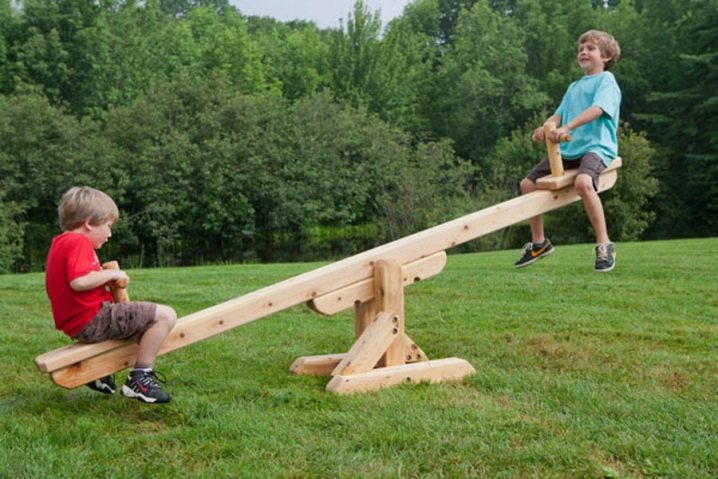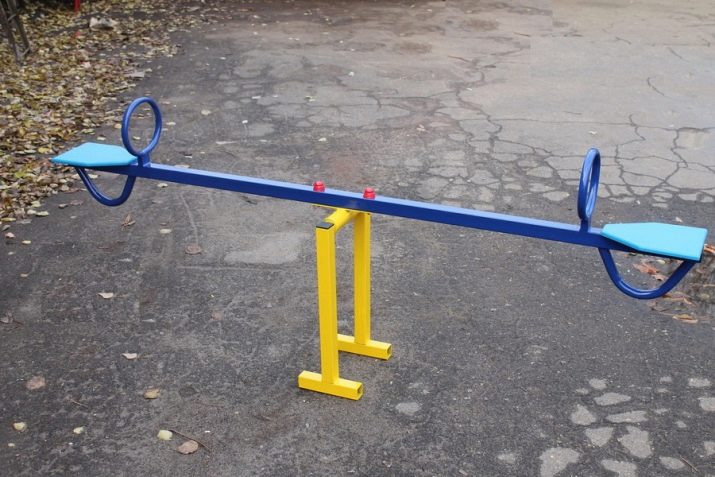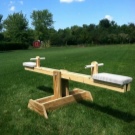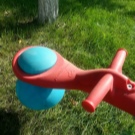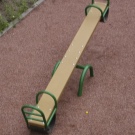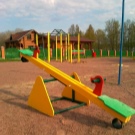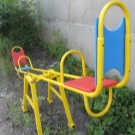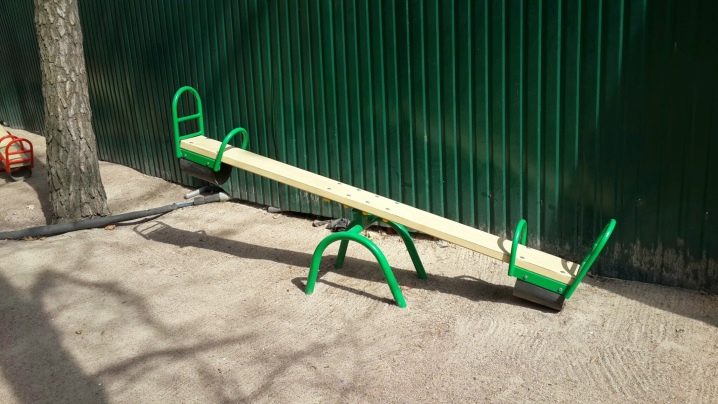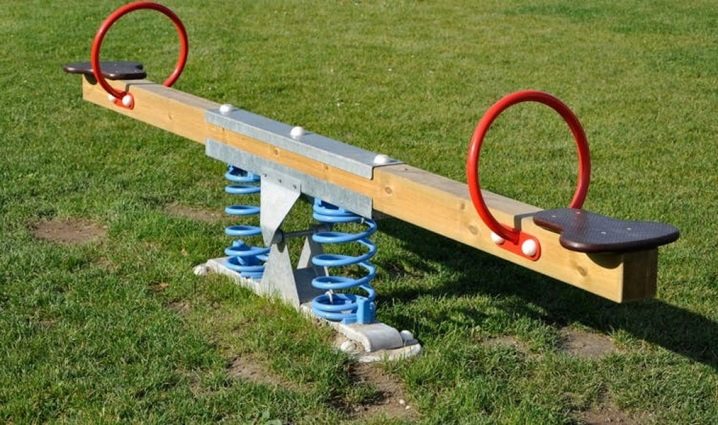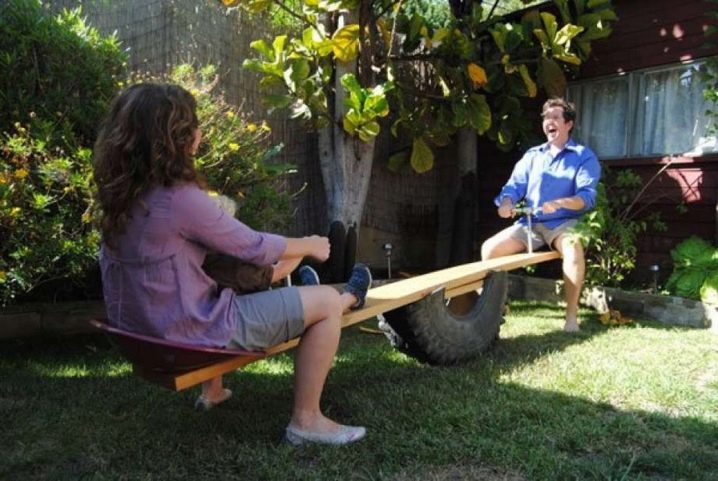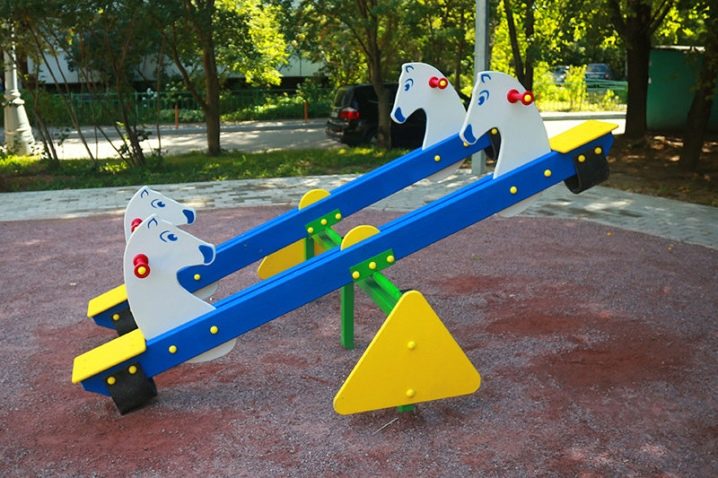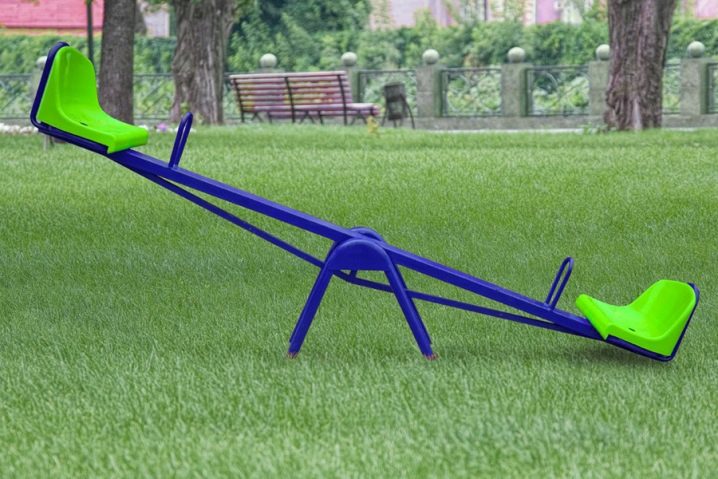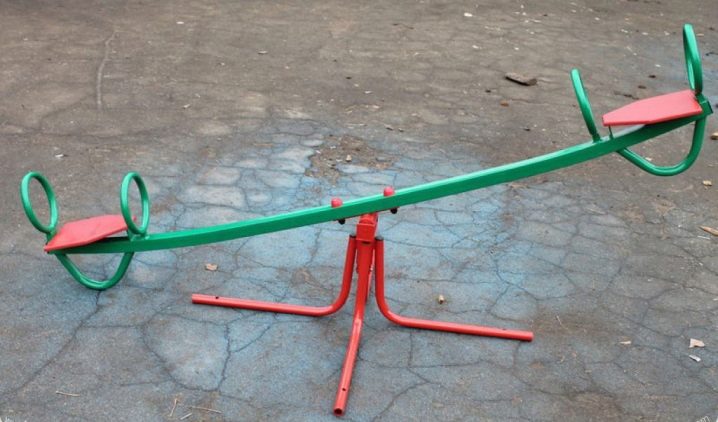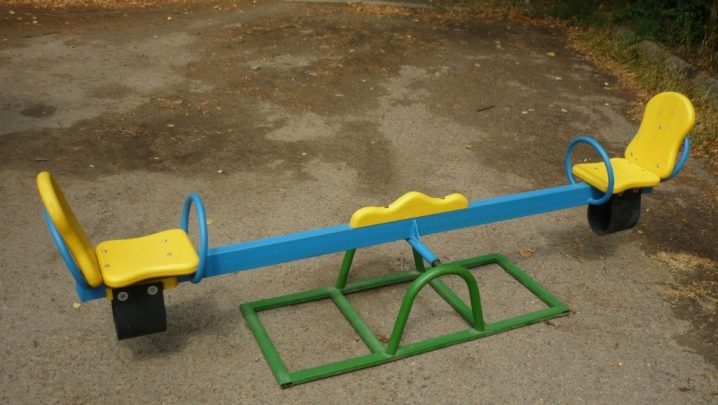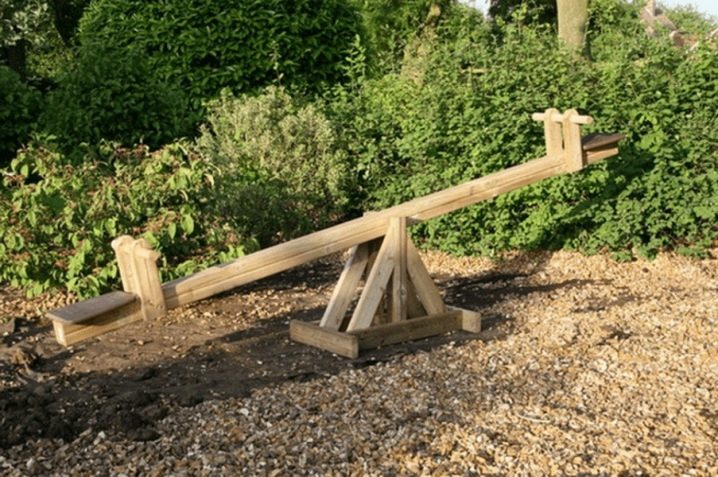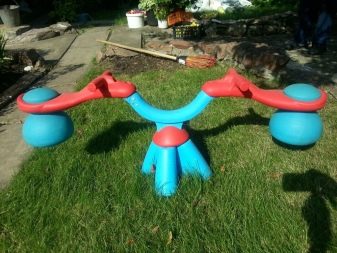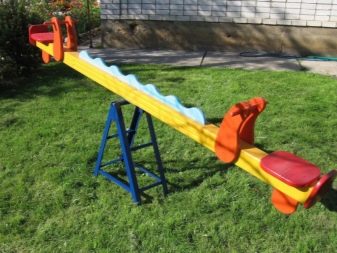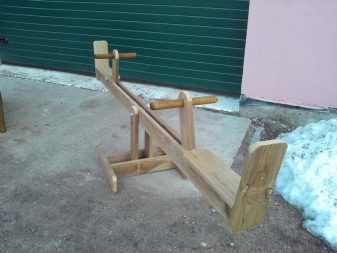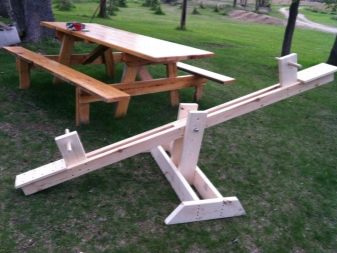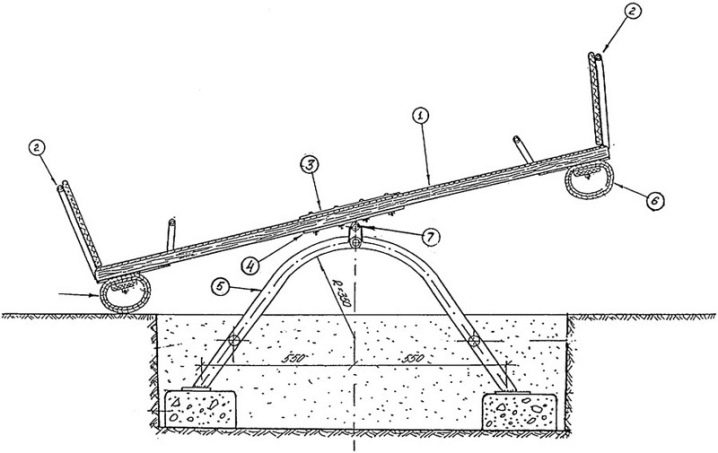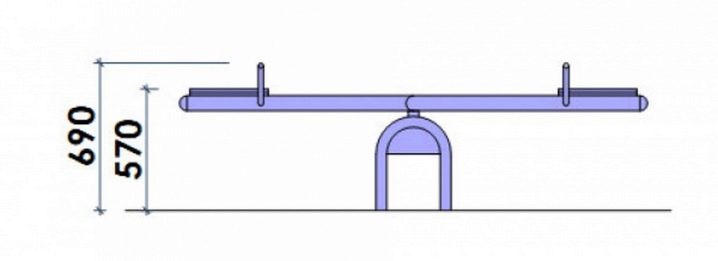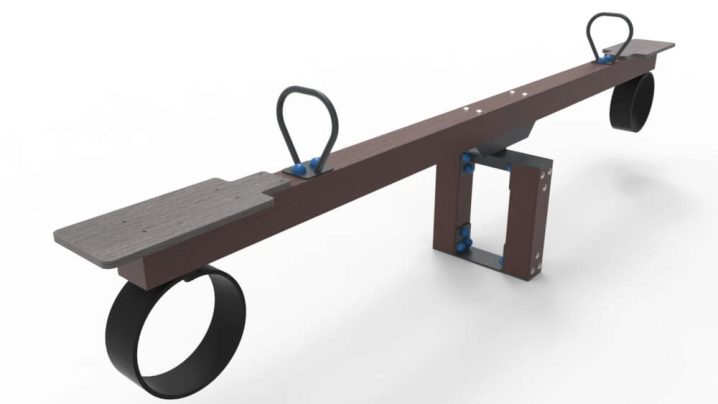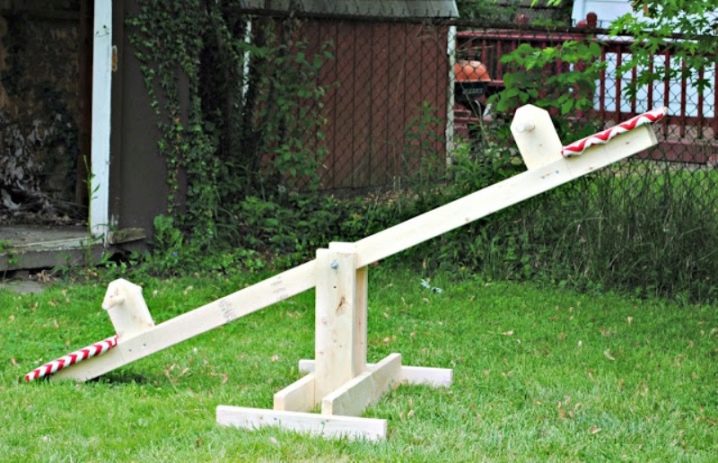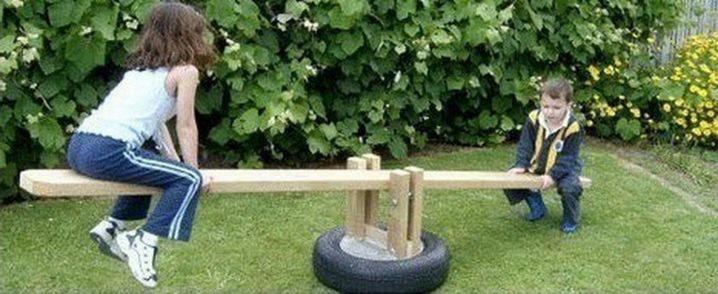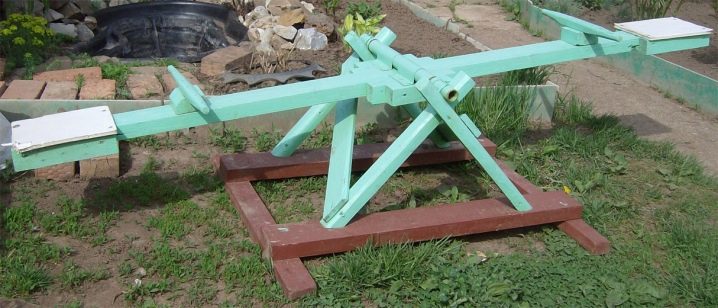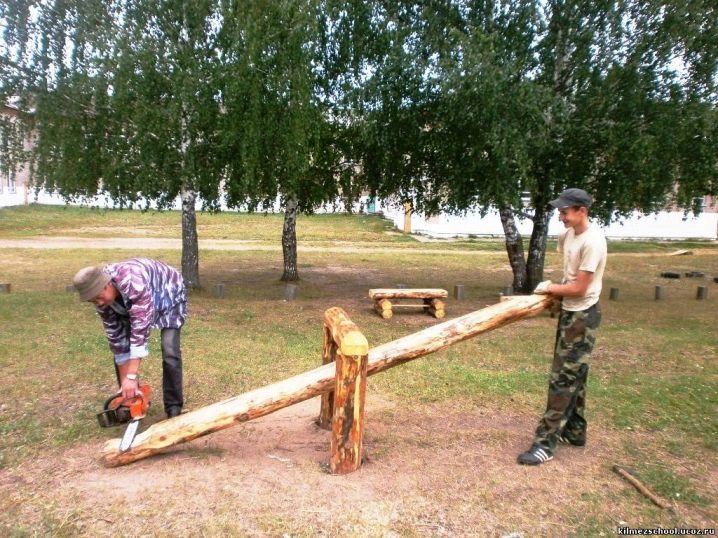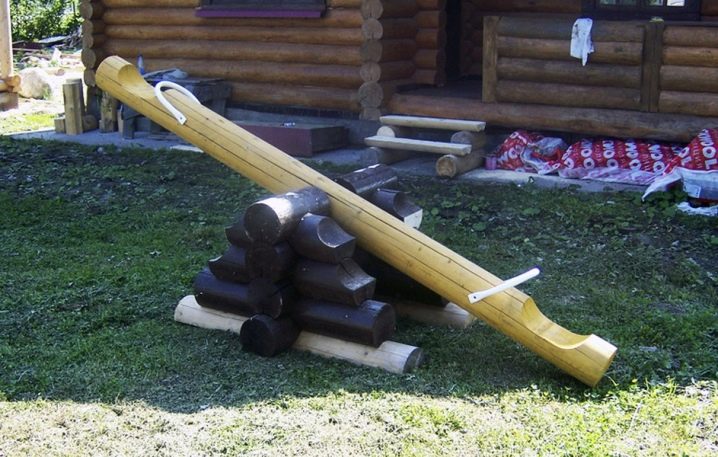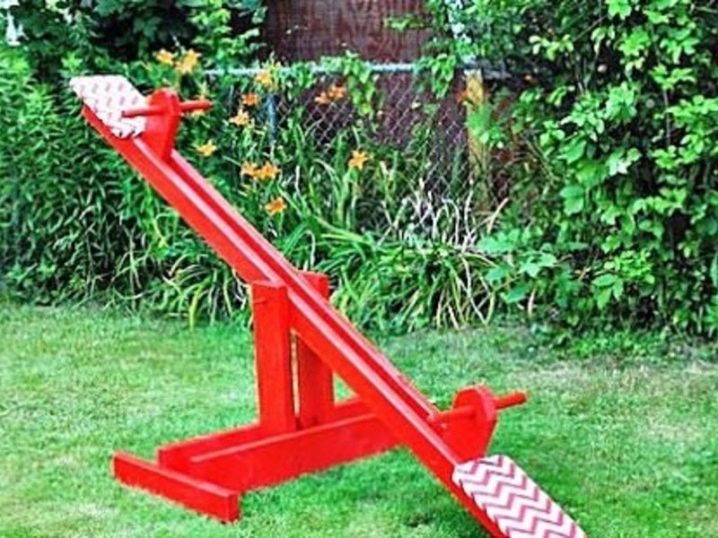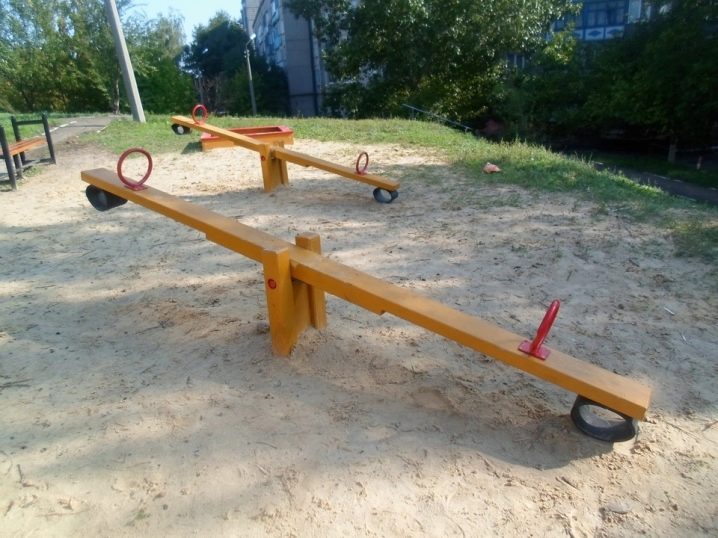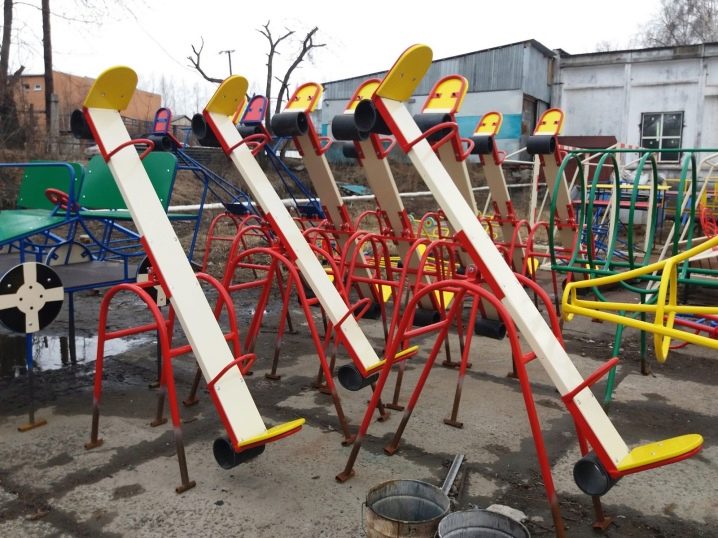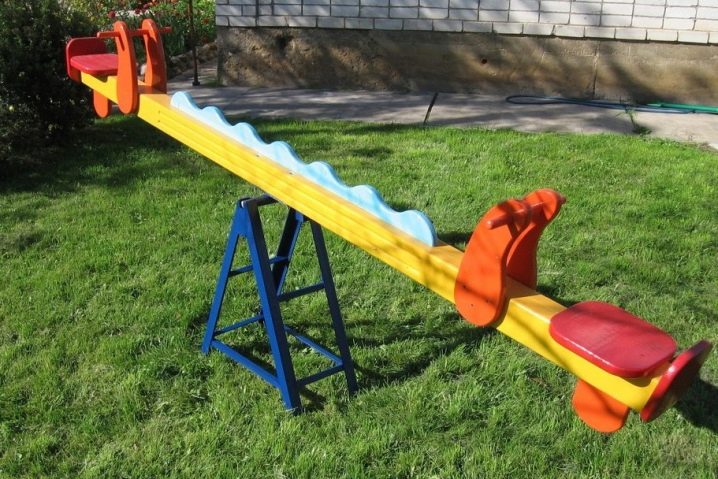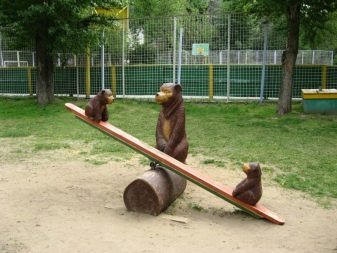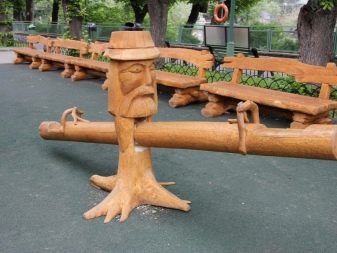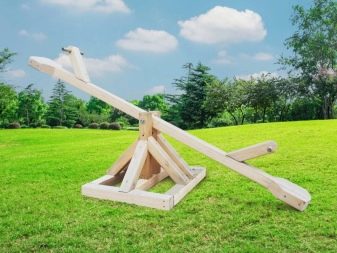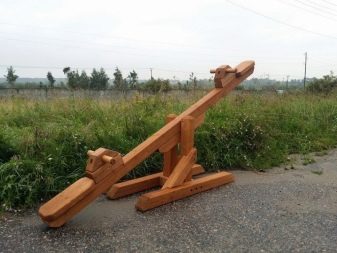Swing balancer: what is it and how to do it yourself?
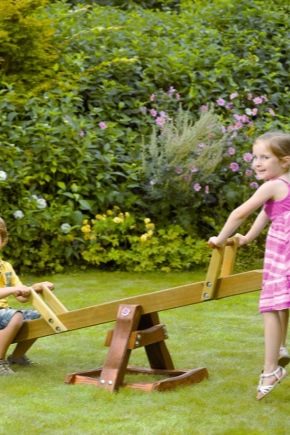
Swing balancer are a kind of children's street rides. Two or more children can ride it at the same time. Such entertainment is considered quite safe, so even the smallest children can ride, but with the support of adults. Therefore, such a swing can be a good tool for practicing with children in their own backyard.
Description and principle of operation
The principle of the design is to use the effect of the advantage, as in conventional lever weights. Therefore, this type of swing is also called the "beam", "swing-weights" and "swing-pendulum." The main parts of the simplest design are the seats and support. A board is usually used as a seat, and a regular log can serve as a support. If the weight of the children is more or less the same, then after pushing off the ground, the swing will alternately be outweighed on different sides of the board, and the children in turn will rise and fall. The advantage of this attraction is the fact that children in a relaxed manner learn to interact with each other, communication, joint games and work. In addition, there is a training of the vestibular apparatus, muscles and coordination of movements.
Despite the general principle of operation of the balancing teeter, several varieties of them can be distinguished.
- Classic swing-balance. The most common and simplest option is a construction resembling a scale - it consists of a board with seats and a support to which this board is attached. Children sitting on opposite sides of the board and swaying create weights.
- Spring balancer. This option is considered more suitable for younger children up to 5 years. He has a small amplitude of rocking, so for babies this type is the safest.In addition, the child requires a minimum of effort, you only need to keep balance. The design consists of a seat, which is fixed on a vertically mounted spring.
- Swings from tires. This is a short-lived option due to the fact that the tires wear out quickly. During construction, they can be used both as a central support and as a shock absorber at the ends of the board.
- Double. This type of swing combines two classic options. Boards with seats are located on one base. It is important that the distance between the two boards is sufficient for safe riding.
- Paired. This view is an improved classic swing-balance. There are not two seats on the skating board, but several - this allows you to simultaneously place three or four children. In this regard, the main plank-board must be more durable in order to withstand the possible load.
- Swivel. Differently, these swings are also called “spinning”. The most difficult variant of street balancing swing for building and skiing. Movement in such a swing is not only up and down,but also in a circle. Therefore, children will need more developed motor skills and better coordination of movements.
Materials and colors
For the manufacture of such a swing, you can use different materials. The three main ones are metal, wood and plastic. Each of them has its pros and cons.
- Metal. Swings from this material the strongest and durable. However, designing them with your own hands is the most difficult - you will need a special welding tool and skills to work with it. In addition, for children, this option is the most traumatic.
- Tree. The most suitable option for self-production, and you can use both boards and logs. It is easier to work with them than with metal - wood is more accessible, it is easy to process and cut the necessary parts with an improvised tool. And most importantly, wood swing is safer for children. They are environmentally friendly and easier than a swing made of metal, so if you fall the risk of injury is much less.
- Plastic. Such designs are sold in finished form, so the whole process is reduced to the purchase of a complete set and its self-assembly according to the instructions.
Style and design
Swing balancer can be a real masterpiece, despite the simplest of their design. If you wish, you can arrange them in the general style of the landscape on the site. The simplest option would be painting in different colors. Swing in the form of various little animals - horses, cubs, fish, butterflies, or in the form of cars and airplanes will be interesting for children. You can color the swing with characters from your favorite cartoons. The handwheel or steering wheel as handles will interest and please children.
The decoration can be anything, the imagination does not limit anything.
How to do?
The simple design of the balancer makes it available for making their own hands. The options can be many, but the most popular and affordable are the classic wooden swing scales. The algorithm is simple:
- necessary measurements;
- strength calculation;
- preparation of materials;
- installation support;
- production of the main strip;
- seat fabrication;
- installation depreciation.
First you need to decide on the size and make the drawings. There are no generally accepted standards, therefore it is necessary to adhere only to recommendations and individual peculiarities.The average length of the main strip is 260–270 centimeters in the case of a double swing. In the paired design for a larger number of seats, the length of the board should be increased.
The height of the support influences the load and swing amplitude. The lower it is, the less load falls on the structure. And the higher, the more interesting will get an attraction for children. It is recommended when calculating the maximum height of the seat to focus on the growth of the child. The approximate value is 100 cm. This is the safest height in the event of a fall. The approximate width of the seat itself is 30 cm, length - 40 cm, the height of the handles is about 20 cm, and the backrest is 25 cm.
It is important to note that all these parameters are approximate. The exact dimensions must be designed on the basis of the individual characteristics of the children.
Depending on the expected load, it is necessary to calculate the strength of the swing. This takes into account not only the weight of the children, but also the fact that several people can climb on them at once, can be swaying while standing. In addition, children grow up and, in order for the swing to last longer, you need to do them with a good stock of carrying capacity.
Wooden swing can be constructed from logs or bars. The first method is easier to manufacture, the second will need some carpentry skills. Oak is considered the best material, but it is more difficult to work with it because of the dense wood, and it costs more. For these reasons, pine is usually used for swings.
It is important that the moisture content of the raw material is no more than 15%, otherwise the product will quickly crack and disintegrate. As a seat, you need to use a board with a thickness of at least 3 mm. In addition, you will need slats, parallel bars for support and stiffeners, hardware, metal rod, material for pens, primer, varnish and paint.
To install the support, the blocks, logs or hemp are buried in the ground and concreted. To prevent the tree from starting to rot, it is important to pretreat it with special means. Thus, a fixed structure is obtained.
You can make and portable swing balancers. For such a support you need to make two racks (left and right), longitudinal and transverse struts, a thrust board and a cover. All parts must be interconnected according to the scheme. The result is a stable support with a rectangular base.For greater stability, you can supplement it with any weighting agents or attach to the ground in a way that does not impede transfer.
For the installation of the main plank, you will need a board that will be installed on a support together with the seats, as well as a bar for stiffener, stops and handles. First of all, it is necessary to grind all parts of the yoke to prevent possible injury from an untreated wooden surface. The attachment points for screws and hardware should be checked for the presence of sharp parts and crevices where the child can stick his fingers. Side corners of the strip, it is desirable to make slightly rounded.
To fix the plank to the support, you must clearly define the center of the board, otherwise comfortable riding will not work. Seats installed on the board is optional, you can sit on the edges of the board. But the presence of seats will create additional comfort. For the manufacture of seats, you can use plastic, plywood, felt, foam rubber. Hard seats can protrude beyond the edges of the main bracket, so in this case, you can take it narrower - it will not affect the comfort of riding.
Seats made of soft materials are recommended to make removable, so that you can remove during rain. At the same time, they must be fastened very firmly - not to twist and not to stagger, so that the children do not fall during the ride. Backs are also not mandatory, but very small children with backs will ride more conveniently. If there are old plastic chairs, the seat can be made from them - cut off the legs and attach to the plank with screws.
Handles should be provided in any form - as recesses in the board, as a separate design or part of the seat.
The function of the shock absorbers is to soften the landing. Otherwise, a sharp descent from a height of one meter can cause injury to the spine. Rubber pads, resilient metal products or old car tires can be used as shock absorbers. These parts are installed either under the board from the back of the seats, or in the ground at the landing site of the swing. After complete assembly, the swing can be painted, varnished and decorated.
Maintenance and Care Tips
The use of swing-balancer should be primarily safe for the child.In this regard, all consumables must be non-toxic, so as not to cause harm to health. Paint must be selected for external use. Metal parts can be lubricated with anti-corrosion agents.
The installation site of the swing should be level and regularly free from prickly or poisonous vegetation., as well as one that can provoke allergies. Reservoirs and communications should not be near either. During operation, it is recommended to check the condition of the structure for defects. Over time, the device may form cracks and roughness - they must be promptly eliminated.
Successful examples
With a little effort, correctly calculating the parameters of the design and erecting a swing-balancer with your own hands, you can as a reward get a perky children's laugh. The most successful options for various types are presented in the photo.
How to make a swing-balance with your own hands, see the next video.
